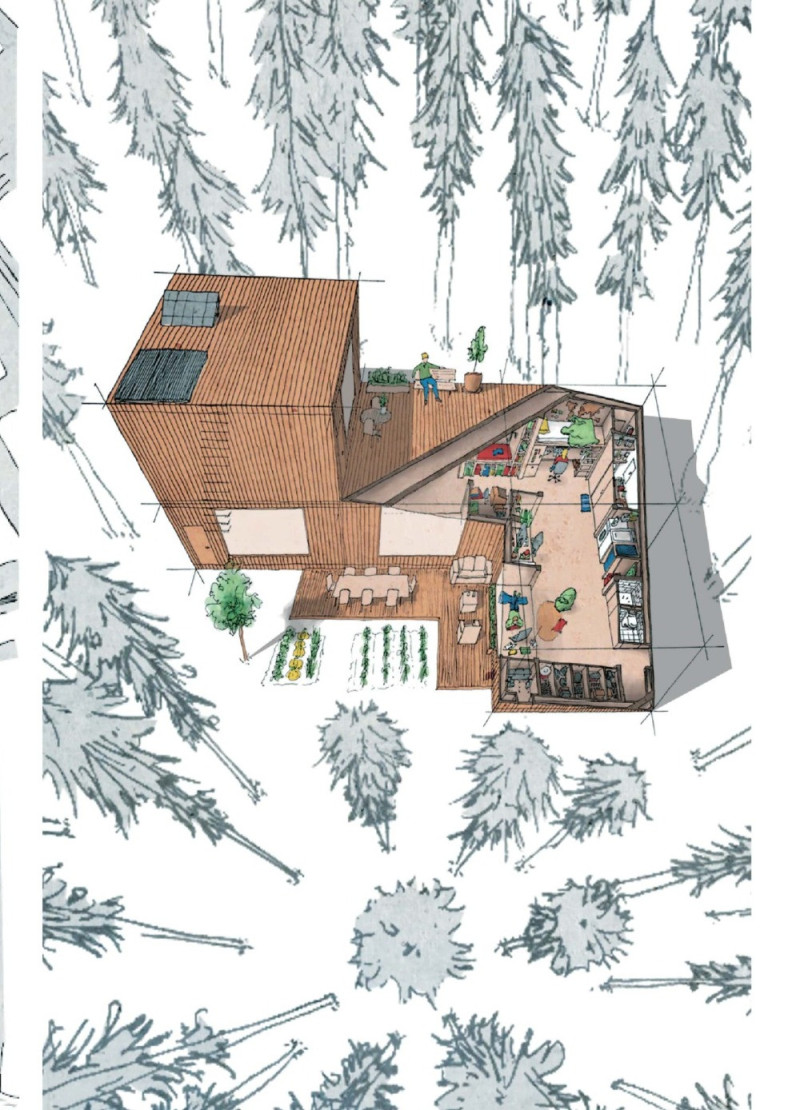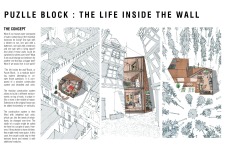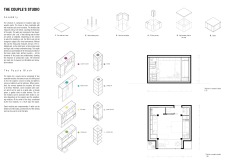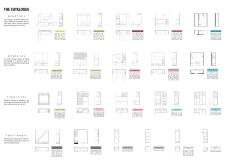5 key facts about this project
This project's primary function revolves around its role as a community-oriented space that embraces diverse activities. Whether it serves as a multifunctional public building, a cultural center, or an educational facility, the architecture is shaped to accommodate various uses while ensuring a fluid interaction among users. The spacious interiors are designed to foster collaboration and engagement, reflecting the growing trend in architecture to promote social interaction and inclusivity. Each functional area flows seamlessly into the next, highlighting the architect's understanding of user experience as paramount in the design process.
One of the standout features of this project is its innovative use of materials, which harmonizes modern construction techniques with traditional craftsmanship. The choice of concrete and steel contribute to the building's structural integrity. The thoughtful incorporation of natural materials, such as wood and brick, adds warmth and texture, bridging the gap between contemporary and vernacular architecture in a relatable manner. Glass is strategically utilized throughout the design, inviting natural light to penetrate deep into the interior, thereby reducing reliance on artificial lighting and promoting energy efficiency.
Attention to detail is evident in the design language, where every element is meticulously considered. The facade is not merely a protective layer but serves as a key aspect of the building's identity. It features a combination of vertically and horizontally layered materials that create depth, guiding the eye while also serving practical functions, such as shade and thermal regulation. Landscape integration around the structure further enhances the environment, employing native plant species that contribute to the local ecosystem while providing aesthetic value.
Sustainability takes center stage in the architectural philosophy behind this project. Passive design strategies are employed to optimize energy performance, with features such as strategic window placements and shading devices that minimize heat gain during summer months. The introduction of green roofs and rainwater harvesting systems illustrates a commitment to reducing the environmental footprint, aligning the building with contemporary architectural trends that prioritize sustainability.
The project also reflects cultural nuances, drawing inspiration from local traditions and architectural styles. This homage to context is achieved through ornamental detailing and symbolic motifs that resonate with the community's history and identity. Such design approaches not only enrich the building's narrative but also embed it within the cultural landscape.
As one delves deeper into the project's architectural plans and sections, it becomes evident that the intricacies of the design are as significant as the overall vision. Thoughtful spatial organization leads to a coherent flow between internal and external environments, while the adaptability of spaces is geared toward future needs, ensuring long-term relevance. The careful orchestration of light, space, and material throughout the design engages the senses, allowing users to experience the architecture in varied ways.
In summary, this architectural project represents a fusion of practical solutions and design excellence, tailored to meet the needs of its users while responding thoughtfully to its environment. For those interested in gaining a more thorough understanding of this project, it is highly encouraged to explore the architectural plans, sections, and designs, which will reveal further insights into the unique architectural ideas that underlie this compelling work. Engaging with these elements can provide a clearer picture of how this design not only meets its intended functions but also enhances the broader community experience.


























